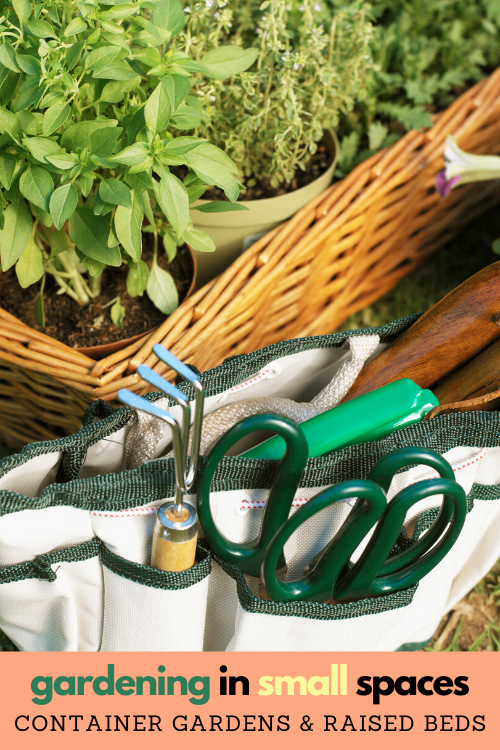This post may contain affiliate links. Read our disclosure here.
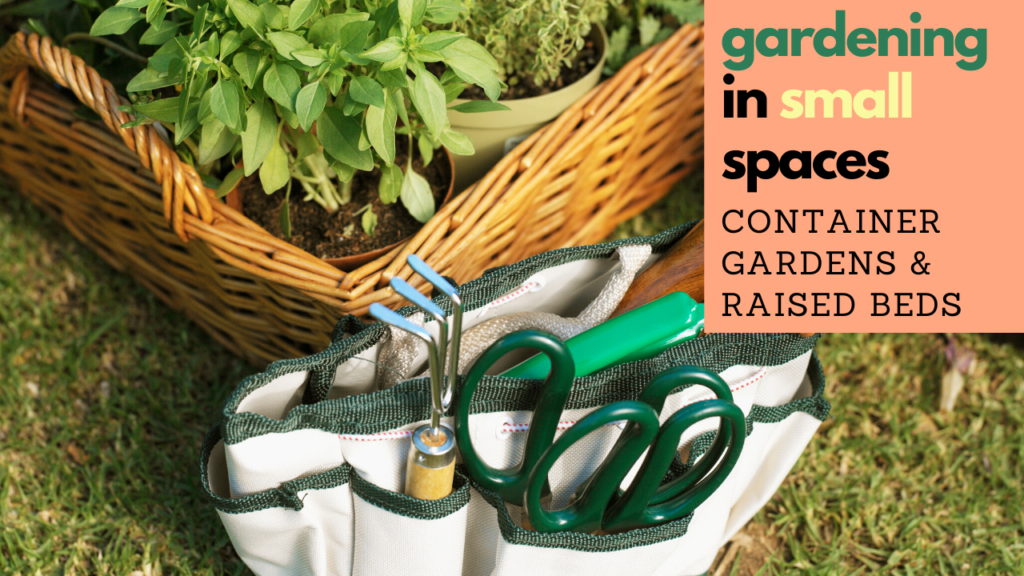
One of the best ways to save on produce is to grow your own! If you are living in an apartment or even a house with a tiny backyard, you may think that this isn’t possible. Don’t use your lack of space as an excuse! You can grow so many vegetable plants even by gardening in small spaces with just the light from a well-lit window, and in the end you have fresh veggies and decorations for your house. There are actually perks of having a container garden over a traditional one… one of which is no back-breaking weeding!
If you have a tiny backyard, you can do even more using raised beds. You do need a section of your yard that gets sun for at least half the day, so use this as an excuse to spend the day outside and see what areas are the sunniest.
Gardening in Small Spaces: Container Gardens and Raised Beds
What can you grow in a tiny space?
While some plants aren’t good for growing in your living room (think corn stalks and long pumpkin vines), there are many plants that are perfect for your living room window. A few plants that are perfect for small spaces are tomatoes, blueberries, carrots, lettuces, peppers, and herbs. If you have space that can handle vertical climbing plants, you could also add some peas to your garden.
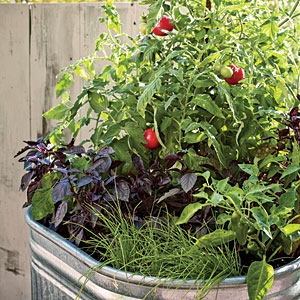
Container gardens
Container gardens come in all forms. They can be traditional pots, hanging baskets, window baskets, and even small pots on your windowsill. Spend some time pondering what you think your space can handle and then go on the hunt for containers.
You’ll need some potting soil and containers. If you choose very large pots, then do some research before filling the entire pot with dirt. Many of your plants will have a root depth that is nowhere near the size of large pots. So put things inside the container to take up space (like upside down plastic plant buckets), then fill the rest with your potting soil. This not only saves you from wasting dirt; it also saves unnecessary weight. Now hopefully you can move your container around if needed.
For decor and design purposes, try going with a number of different containers in all different sizes. You’ll love the non-uniform look and when they are all green and growing, you’ll have gorgeous flowing plants.
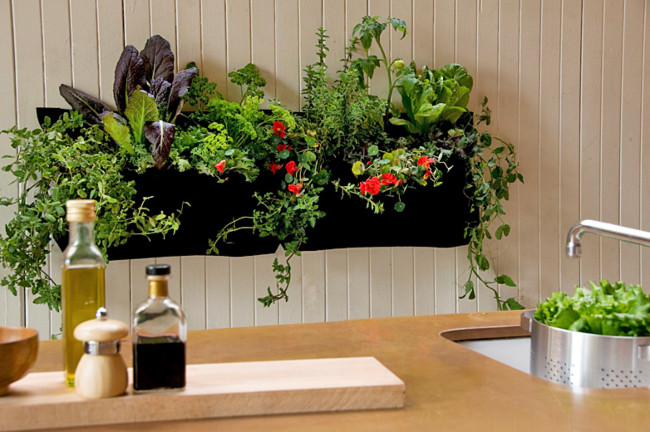
Some plants need to be in their own containers. Think about heavy leafy plants like full grown tomato bushes. They won’t leave much room for low growing plants around them. Other plants will do perfectly together in the same pot—I like to put above ground lettuces with below ground carrots to make a green container that has different leaves, textures, and colors (not to mention that you are half way to home grown salads).
The top issue in most container gardens is drainage. If your pots are coming indoors, they have to be able to drain, so plan accordingly to have pots that have holes in the bottom and have drain saucers. You don’t want roots that are water logged as it can cause large issues.
Raised Beds
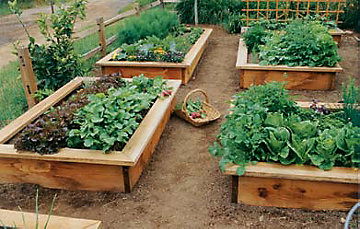
We have built raised beds at every house we’ve lived in. These come in all shapes and sizes, and for those that aren’t handy you can even buy them. Our best beds were 3 feet wide and 5 feet long. We had a sloping backyard, so we built beds that stair stepped the slope of the yard. Being three feet wide, there was room to do two rows of vegetables with plenty of growth space between them. Raised beds can grow the same plants that are good in containers, plus a few more that are more full.
How do you build a raised bed?
You can go super easy with landscape stones or concrete blocks that you set in place with no tools or nails required. Or start to build wooden or even metal beds. The best thing to consider is your skill level and the amount you want to spend. Most of the time our beds are made from scraps of wood we have lying around to decrease the cost. We also have leftover roofing metal that would be perfect to help build sides of a bed. Note: If you go metal, I would highly recommend wood around the top and corners if you have small children.
Once your bed is built, you can mix backyard dirt with potting soil and any other soil amendments you want to add. Then bring on the plants!
Don’t build beds that are so wide you can’t reach across them. This sounds very common sense, but you would be amazed how many people don’t think about how they will pick their tomatoes until they find themselves climbing into their raised bed everyday.
In general, having one or two raised beds along your back porch or even your back fence will be plenty of room to provide all the tomatoes and small veggies you want this summer!
Check out more on getting ready for your garden now!
